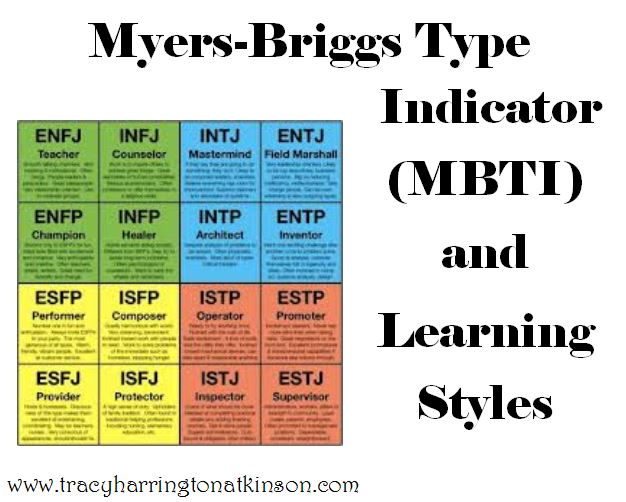Learning Styles for MBTI

The Myers-Briggs Type Indicator (MBTI) was first published in 1943 by Katharine Briggs and her mother, Isabel Myers based on the research and work of Carl Jung. The purpose of this tool began as an opportunity for individuals to understand themselves and each other better, identifying sixteen different personality types. Yet, it has grown to be used for a variety of additional purposes such as determining learning styles.
For learners, the MBTI demonstrates a preferred mode of motivation and interest in topics, confirms how individuals process and collect knowledge and information, in addition to pointing out learning preferences such as format, process and environmental predilections. Within the sixteen different types, distinct and effective learning methods are specified. Academic advantages and disadvantages are discovered to be associated with the type preferences in addition to writing styles (Myers, et. al., 2009).
The sixteen personality types is based upon the work of Carl Jung’s theory of psychological type which describes an individual’s personality within four dimensions: where attention is focused: extraverted (E) versus introverted (I); the method information is received: intuition (N) verses sensing (S); how decisions are made: feeling (F) versus thinking (T); and how individuals interact with the world: judging (J) verses perceiving (P). From each of these pairs, a personality leans toward one side, demonstrating a preference, creating a four letter code such as ISTJ (Myers, 1998).
Click on one of the sixteen personality types for more information:
Click on one of these dimension for more information:
MBTI Learning Styles now available as a class!
Sources:
Myers, I. (1998). Introduction to Type: A Guide to Understanding Your Results on the MBTI Instrument. Consulting Psychologists Press.
Myers, I., McCaulley, M., Quenk, N. & Hammer, A. (2009). MBTI Manual: A Guide to the Development and Use of the Myers-Briggs Type Indicator Instrument. Consulting Psychologists Press.
Subscribe to our YouTube Channel by clicking here.
By Tracy Atkinson
Tracy Atkinson, mother of six, lives in the Midwest with her husband. She is a teacher, having taught elementary school to higher education, holding degrees in elementary education and a master’s in higher education. Her passion is researching, studying and investigating the attributes related to self-directed learners. She has published several titles, including Calais: The Annals of the Hidden, Lemosa: The Annals of the Hidden, Book Two, Rachel’s 8 and Securing Your Tent. She is currently working on a non-fiction text exploring the attributes of self-directed learners: The Five Characteristics of Self-directed Learners.


Comments are closed